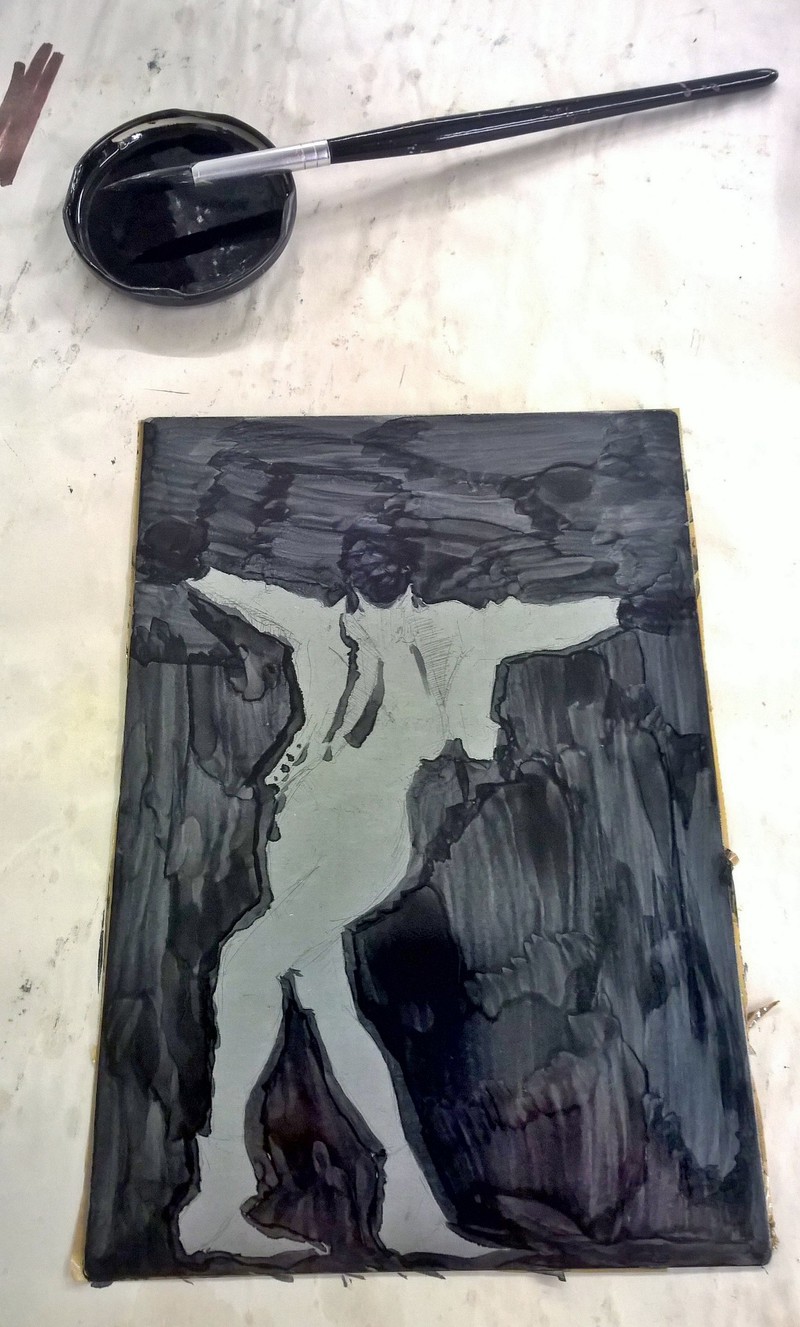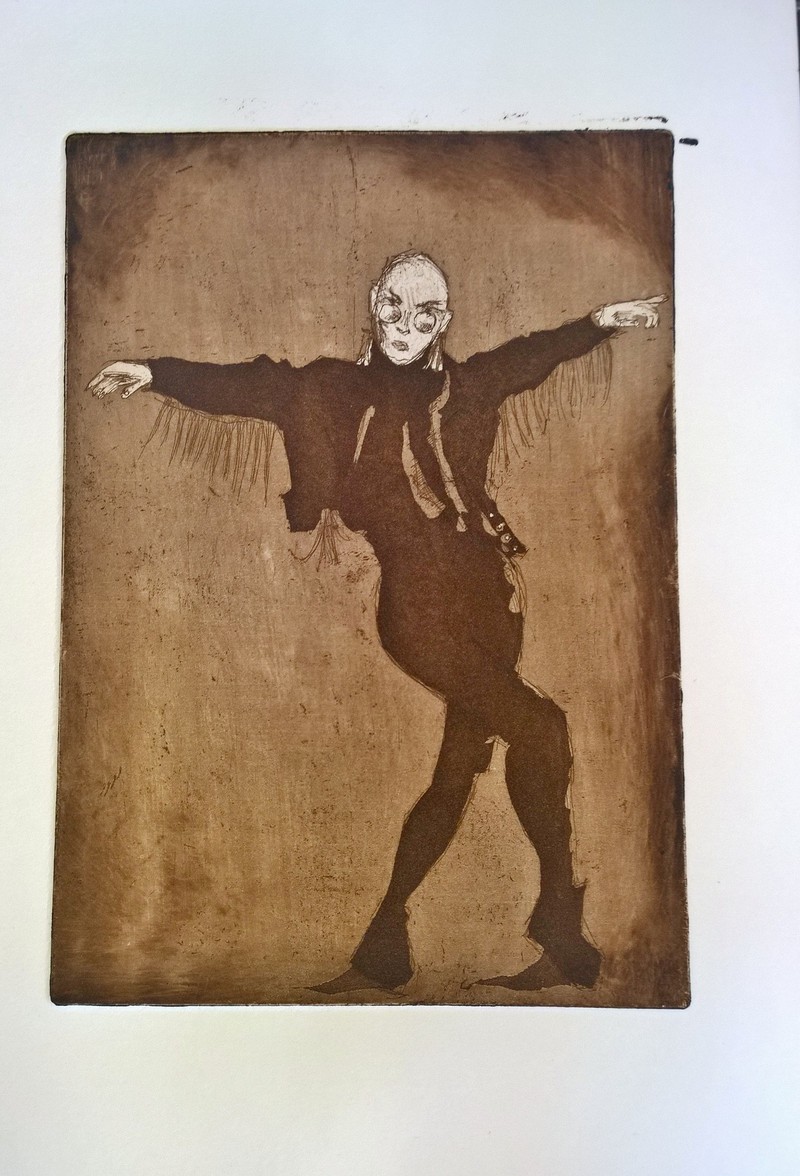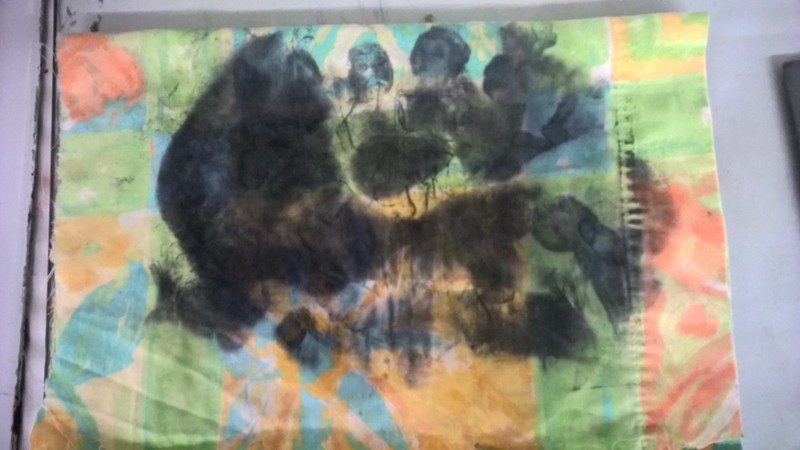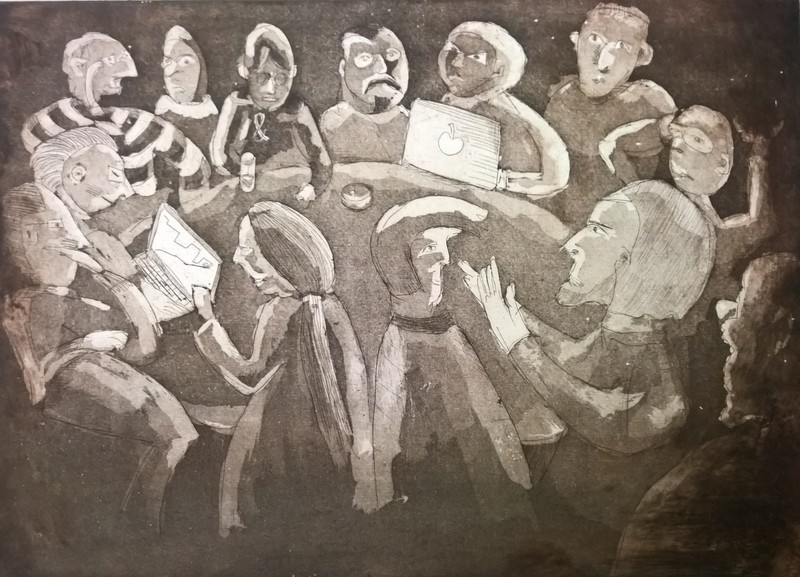Aquatint
Aquatint has, obviously, nothing to do with water. Rather, it describes the effect that the technique makes, which looks like a watercolour wash. It was developed in the late 18th Century and popularized by Goya (to the extent that many of the best known aquatint printmakers, like Paula Rego and Otto Dix inevitably get compared with Goya).
As learning pieces I worked on the plates I’d started over summer.
Aquatint consists of getting a resist finely distributed on the plate. Apparently many artists just spray acrylic paint onto the plate, bish bosh. We’re learning the traditional method, where you put the plate into a box full of swirling powdered rosin. This is a slightly frightening process, as the rosin is allergenic so you enter the room kitted out in a full mask. It’s also flammable, which makes the fact that you have to melt it onto the plate with a campus stove slightly unnerving (that’s done in an adjoining room of course, hermetically sealed with a butcher’s curtain.) But after having had the Stern Talk, and melted the rosin on a few times, it does start to make a bit of sense.
Once the plate’s cooled down, you can stop out the parts that you don’t want to etch.

Then you just bite the plate (in slightly more diluted acid than for line work) possibly stopping out more between bites, to get different shades. Here’s the final Sasha Velour aquatint:

To remove the stop-out varnish before printing, you use a different solvent than
usual (meths instead of white spirit, if I got that the right way around)
leading to much hilarity when you get the wrong one and it refuses to come off.
You’re recommended to simply lay the soaked rag on top of the plate for it to
dissolve the varnish, rather than scrubbing at it (and potentially damaging the
plate, if you think that dissolving thousands of tiny pits into its surface has
already weakened the surface structure.) This can lead to your cloth getting
a pleasant Turin Shroud effect:

Here’s the final “Last Retro” plate with several layers of shade. Made a few mistakes, but not bad given I was working quite fast and fairly sloppily. I may put another layer of aquatint on and bit some of the underexposed areas again.

